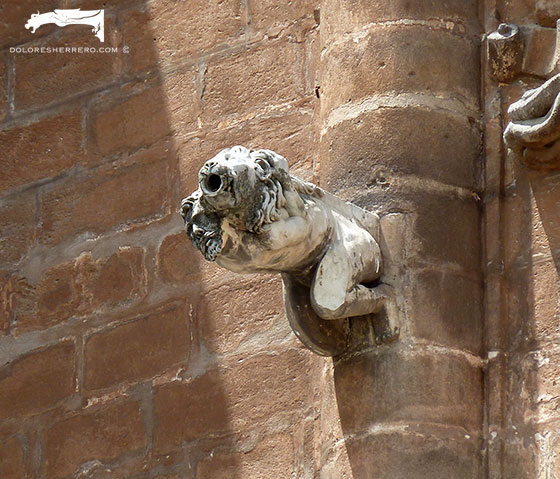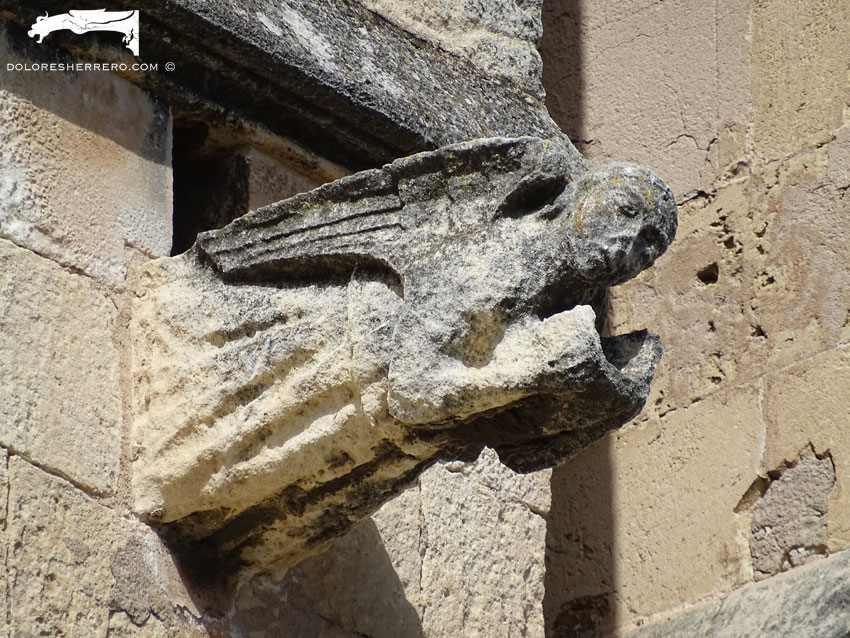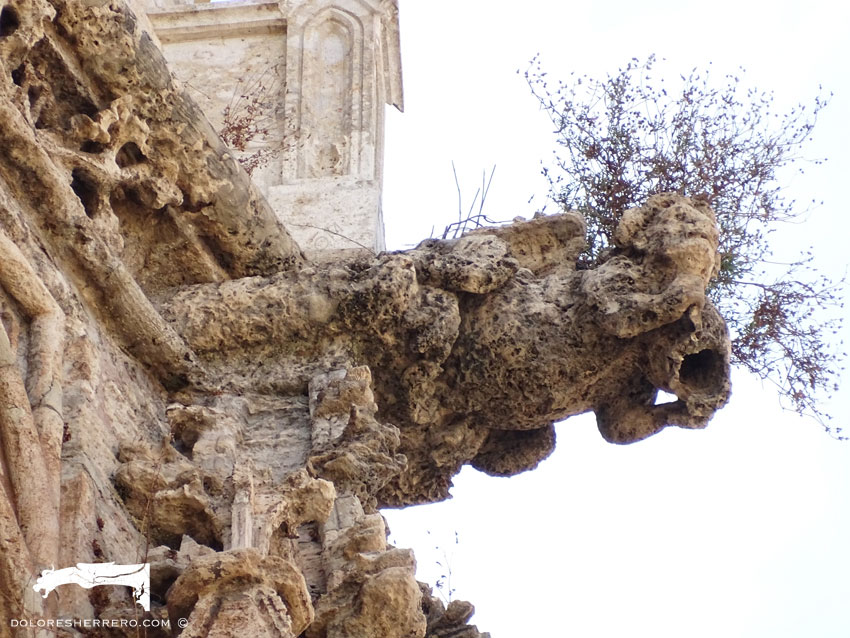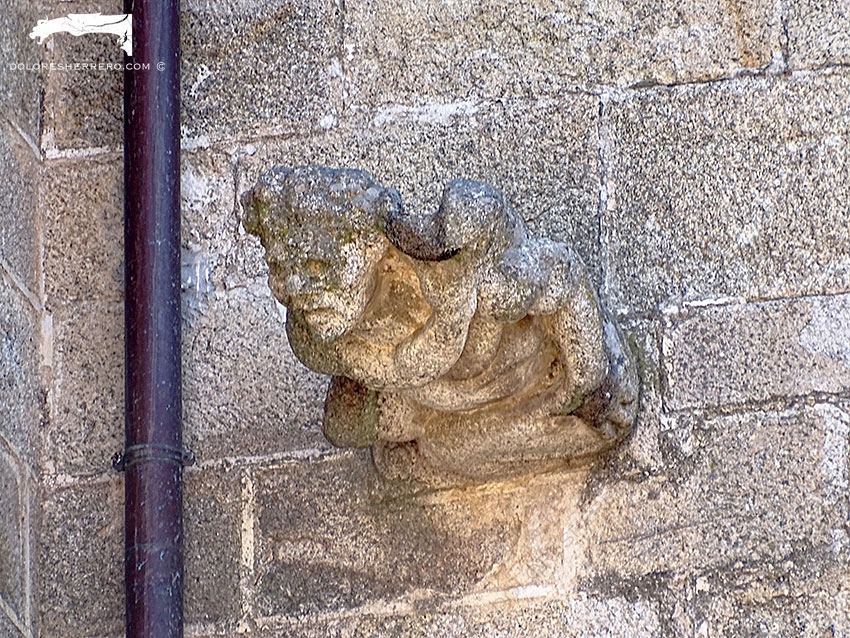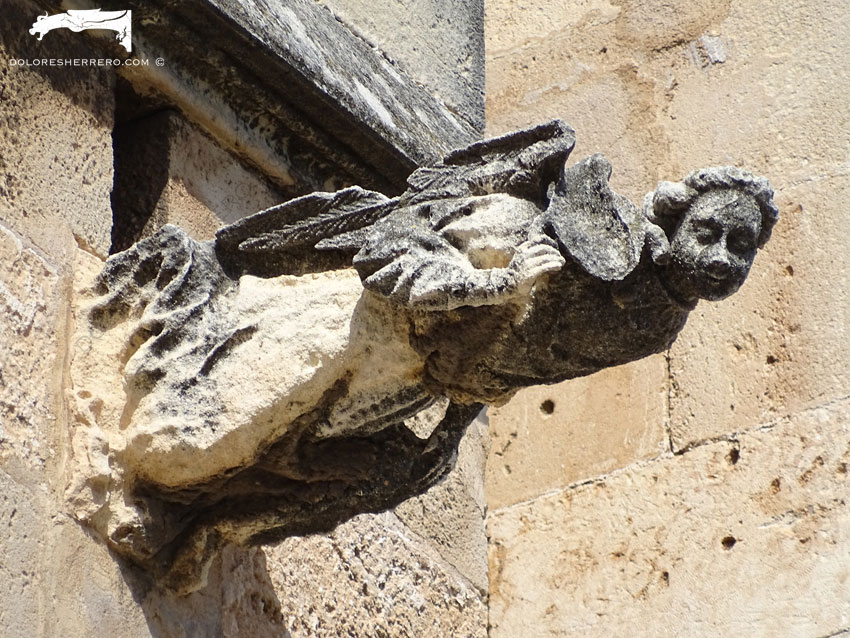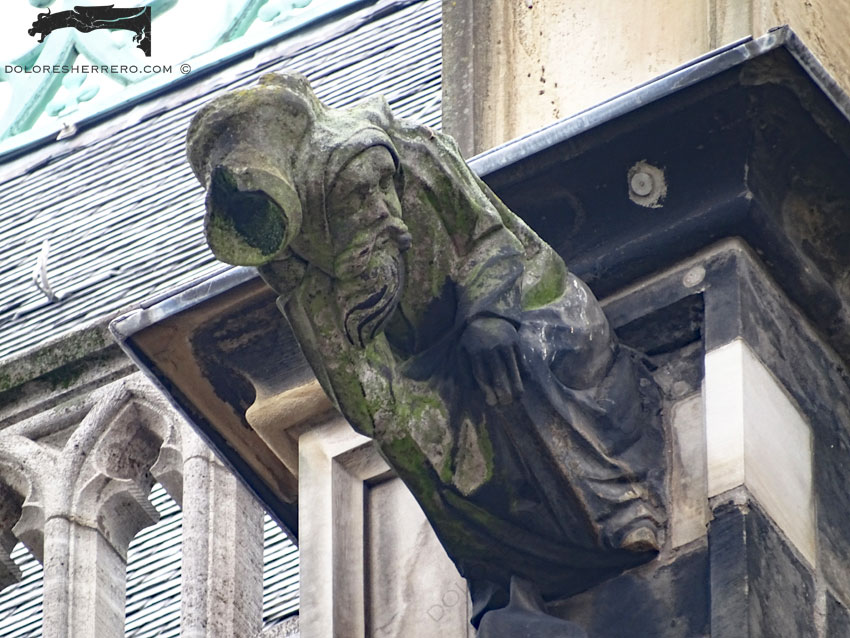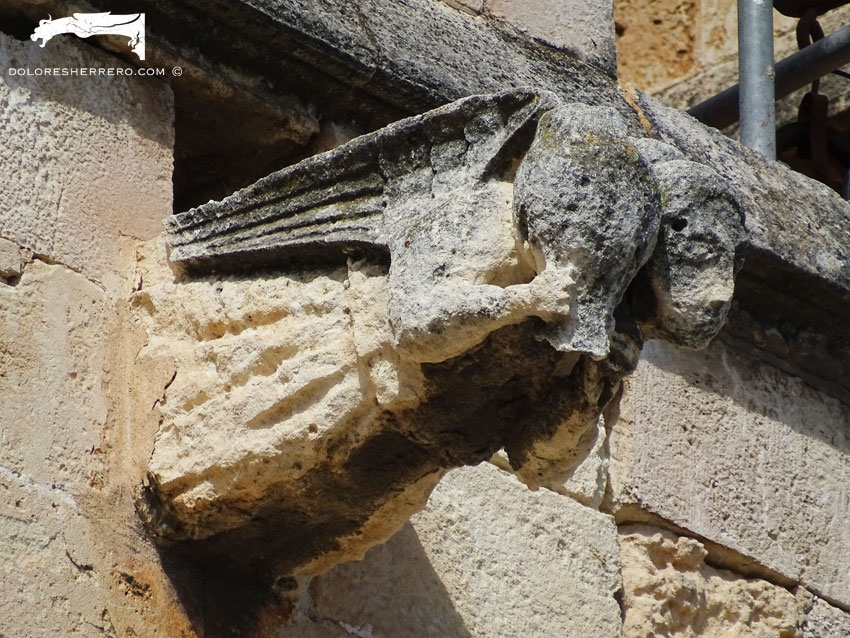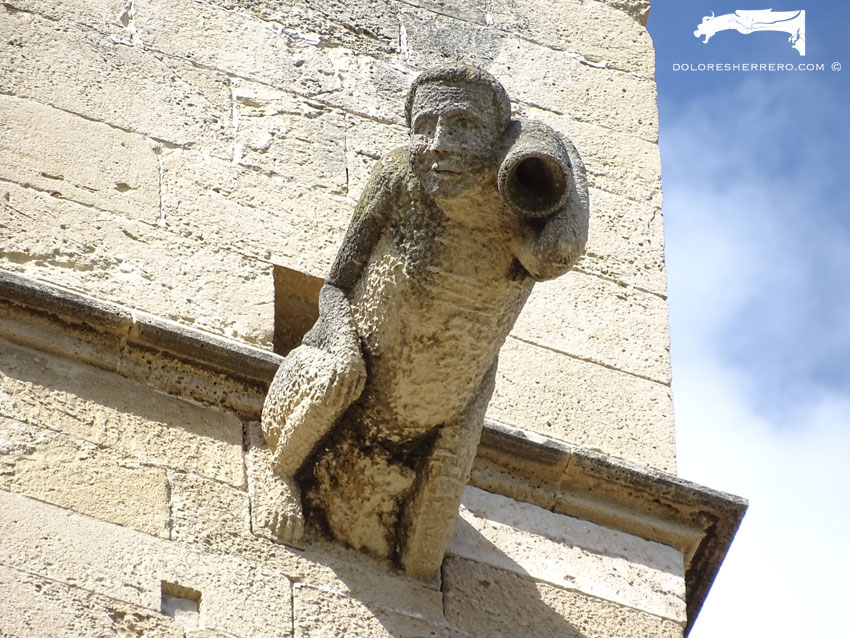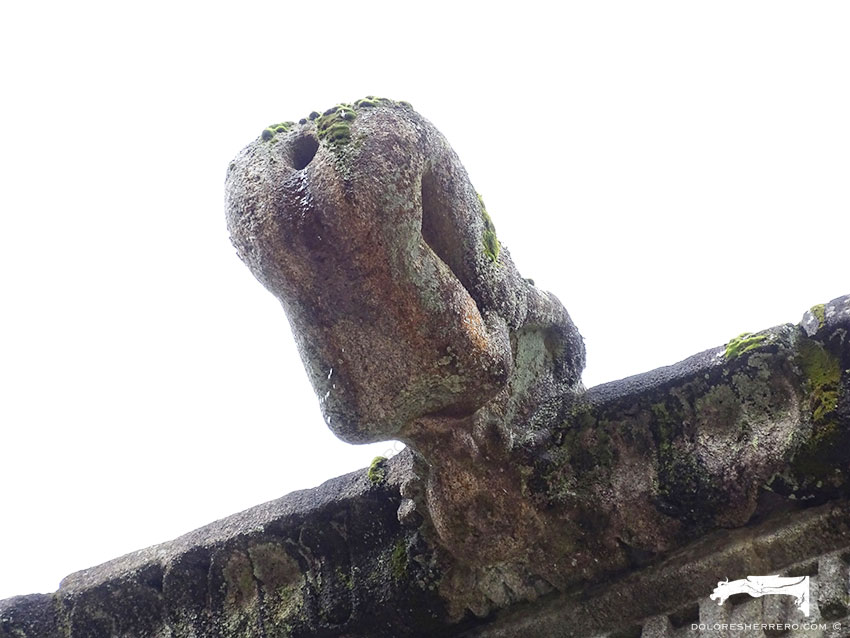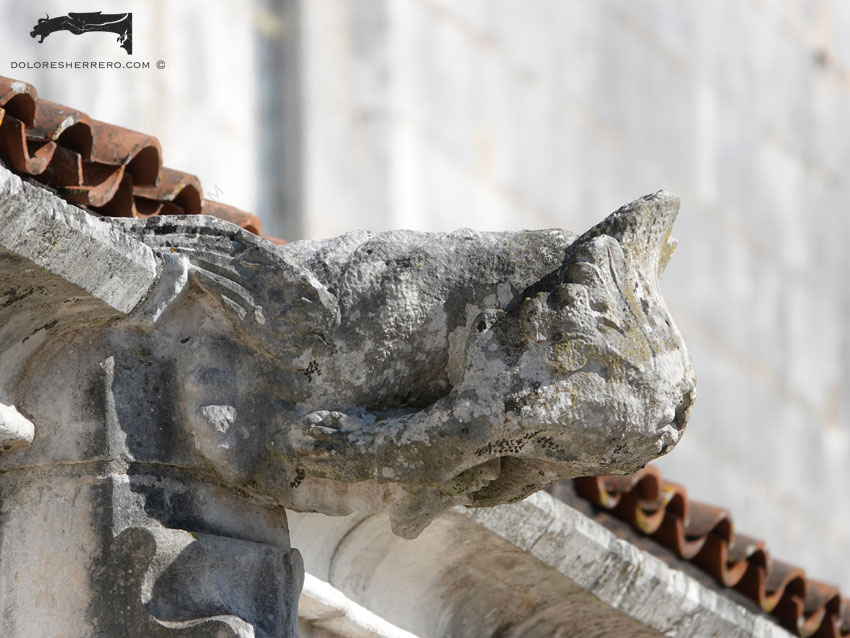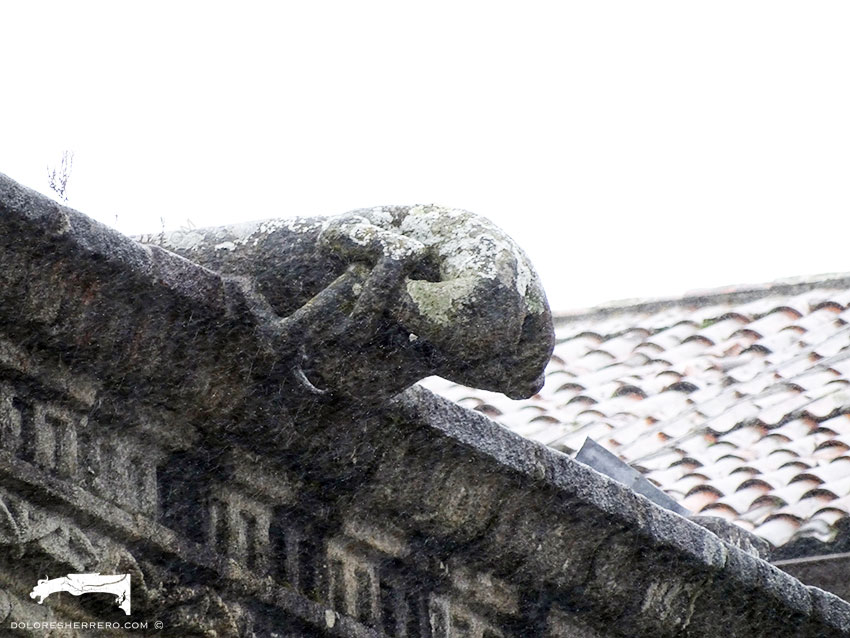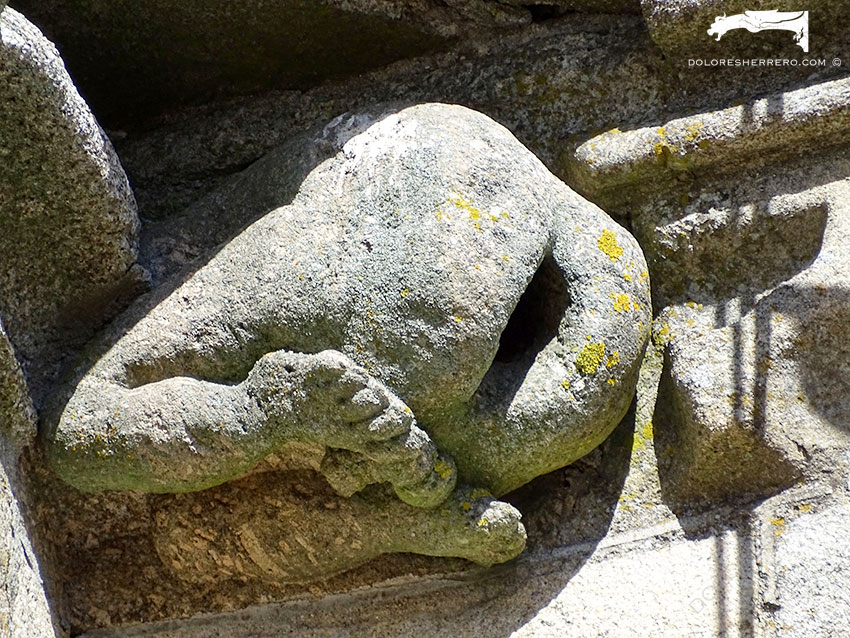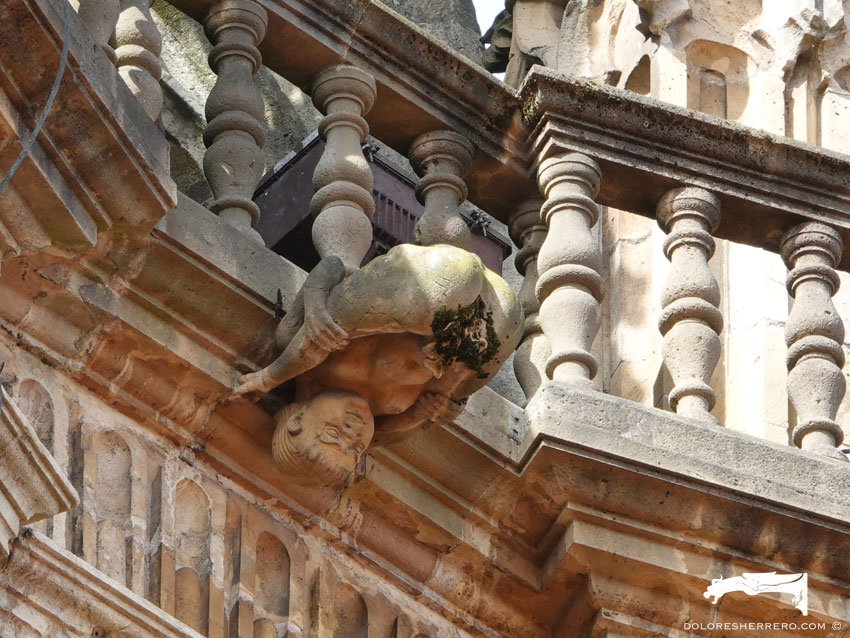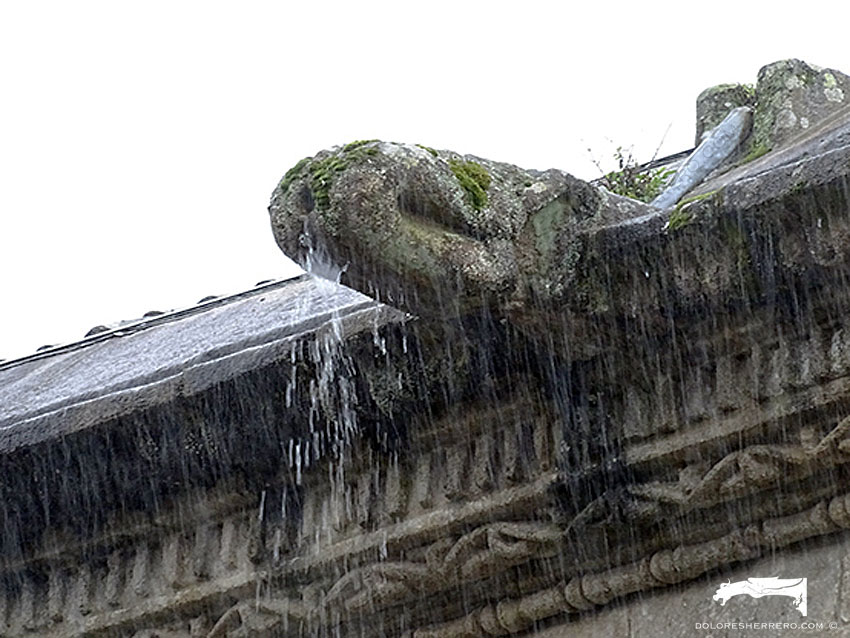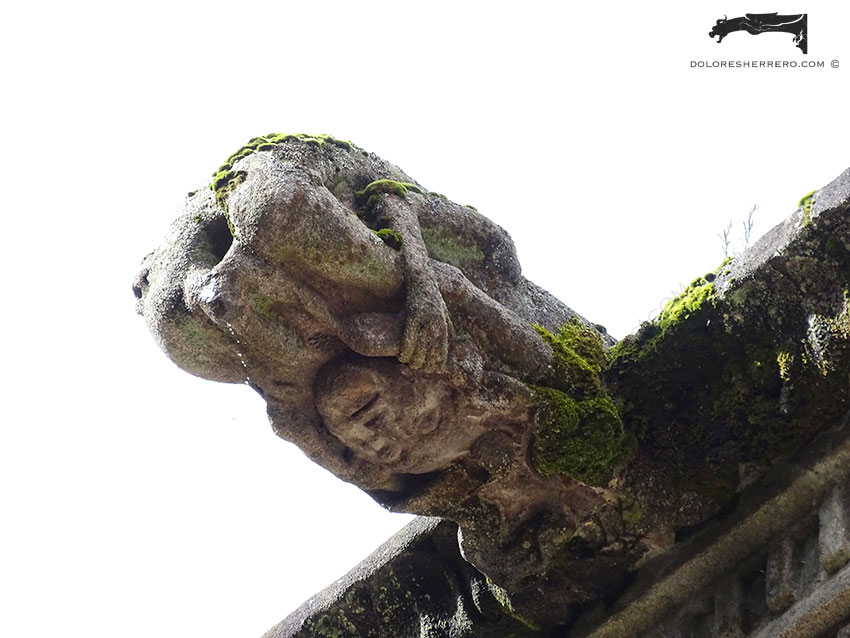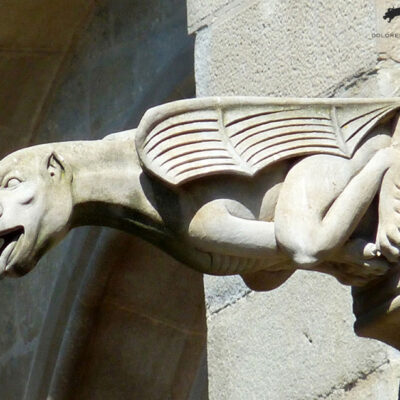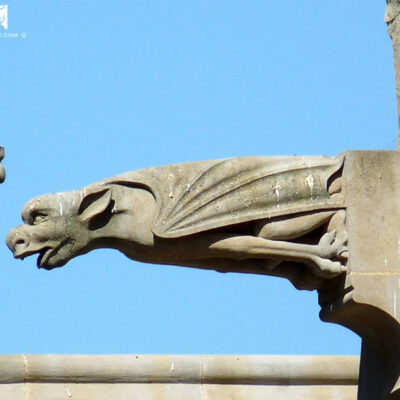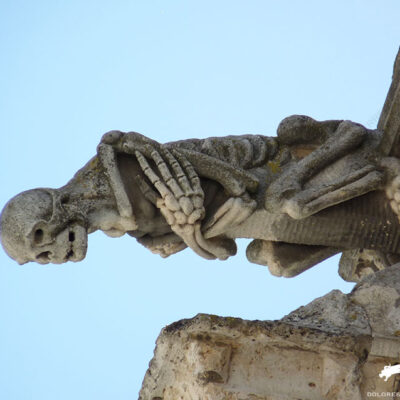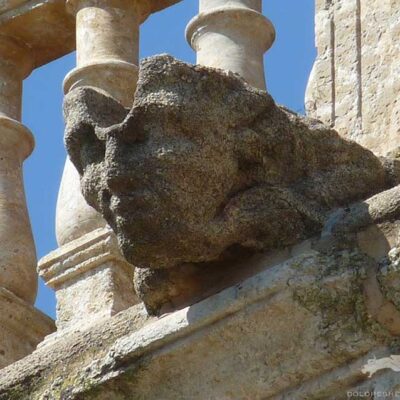Generally speaking, the water drainage spout in gargoyles is placed in the mouths of the beings and creatures we see depicted in them. This means that they are often very eloquent, with wide open mouths and sometimes exaggerated and very expressive gestures (laughing, shouting, pain).
However, this is not always the case. From time to time we find some gargoyles in which water drains away through an object or creature accompanying the gargoyle. This is the case of the doccioni, human figures usually shown with a full-length body and standing upright, carrying either a bowl or vessel on their shoulders or an animal with the jet of water coming out from the mouth. As they portray an action that involves body movement (pouring water or carrying an animal), they are gargoyles of great sculptural quality and artistic beauty.
- Sevilla Cathedral (Spain)
- Coria Cathedral (Spain)
- Bordeaux Cathedral (France)
- Coria Cathedral (Spain)
- Jerónimos Monastery in Lisbon (Portugal)
- Aachen Cathedral (Germany)
- Palma de Mallorca Cathedral (Spain)
- Palma de Mallorca Cathedral (Spain)
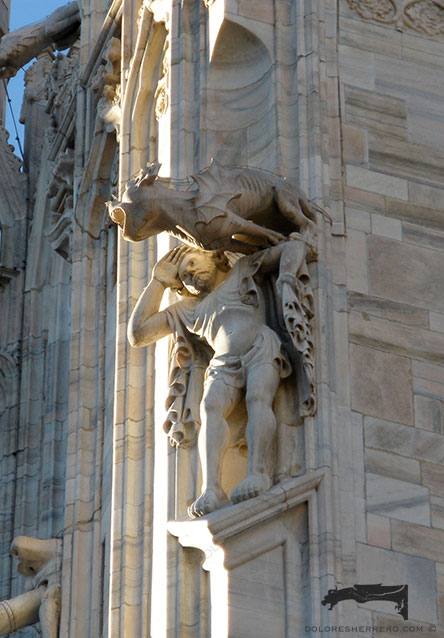
Milan Cathedral (Italy). Photo: Lola Custodio
Sometimes you can also come across gargoyles in which water drains through another part of the body. We are referring to gargoyles that depict figures displaying their anus, through which water spouts, as if they were defecating. There are a number of interpretations on their symbolic meaning. Rebold Benton questions whether this is intended to keep the devil away from the church, or whether it is simply a medieval “prank”.
In his research study on marginal art, Camille says that, of all aspects of medieval culture, the portrayal of scatology and the constant play on faeces in texts and images is perhaps the hardest thing for us to understand nowadays. Manuscript margins are actually packed with these references. What might we think of a knight crouched down and defecating, and whose faeces are taken with great ceremony to a lady in an elegant French Book of Hours? says this author. The first idea we need to eliminate from our minds is that this earthy medieval custom was part of some kind of childishly innocent anal obsession. But the second and even more important point is that we have to forget our modern, post-Freudian ideas about faeces being linked to decomposition, infection and death. In Medieval times, people did not consider faecal material as being dirty or as being out of place, according to Freud. Excrement had its proper place in the scheme of things. It was not yet a secret secretion, it ran through the streets, its odour was everywhere, as Camille tells us. Like dung, it was part of the cycle of life, death and rebirth, and like all other materials it found its way into the prayer books.
Kenaan-Kedar tells us that the body postures of marginal figures are even more audacious than their expressions, especially in the ones where men and women expose their buttocks to the viewer, an even cheekier gesture if they are naked and showing their genitals. Bare buttocks broke the rules of official art, ignoring traditional norms of portraying medieval figures with the aim of seeking a more in-depth reality, and deliberately using alteration and simplification of form. Although this gesture must also have had an allegoric and metaphoric meaning, its impact was immediate and it was not misunderstood. The dialogue between these figures and the official canon can be compared to the confrontation between two texts, a union of the canonical and the popular.
Villaseñor Sebastián states that the hands separating each of the buttocks to display the anus, is a gesture that has been used since antiquity to chase the devil away. The same author also says that a certain Gerber Kart was taken prisoner in 1436 in Constanza for showing his buttocks in public, a gesture seen as shameful. It can also be a blasphemous and insulting gesture. According to this author, another connection with the medieval anus is homosexuality, regarded back then as the unnatural sin of sodomy. History tells us that in the Royal Law Code and Las Partidas of King Alfonso X, as well as in legislation enacted by the Catholic Monarchs in 1497, sodomy was punished with the death penalty. Some scenes of hell show the greedy man with a bag hanging around his neck and penetrated anally by the devil’s tail. This implies that hell is linked with anal penetration. As you can see, all these theses can be extended to apply gargoyles as marginal art.
Some of the postures adopted by these gargoyles are somewhat contortionist. We have already discussed their symbolism in a previous post. However, let’s remember that Le Goff tells us that contortionists, along with prostitutes, were the archetypes of a gestural practice linked to demonic possession and they were outlawed during the 13th century.
- Royal Hospital in Santiago de Compostela (Spain)
- Alcobaça Monastery (Portugal)
- Royal Hospital in Santiago de Compostela (Spain)
- Guarda Cathedral (Portugal)
- Royal Hospital in Santiago de Compostela (Spain)
- Oviedo Cathedral (Spain)
- Royal Hospital in Santiago de Compostela (Spain)
- Royal Hospital in Santiago de Compostela (Spain)
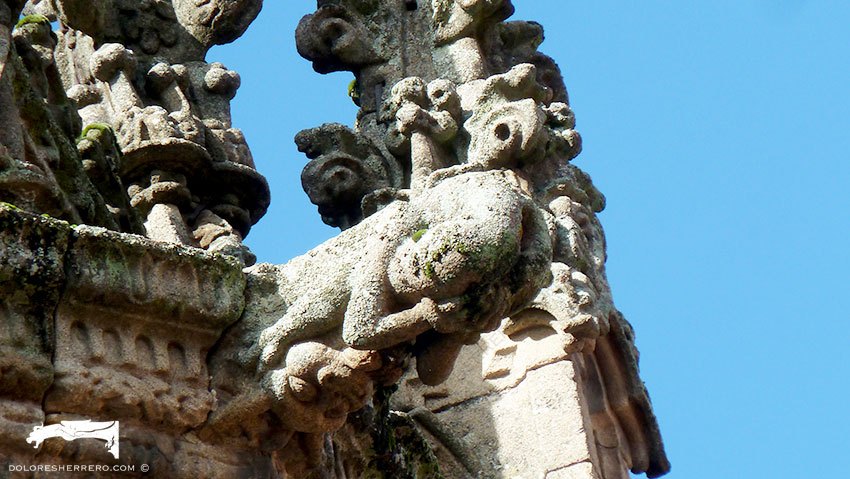
Braga Cathedral (Portugal)
Such gargoyles are surprising and even grotesque for many, with a symbolism and tradition that now scandalises us and even provokes rejection and repulsion. But this is our history, in keeping with an era, the medieval era, with its traditions, experiences, morals and religious customs. We should not forget that, as Fossier says, the Middle Ages was an era of extremes. And he is right. It was a thrilling historic time, in which good was displayed with disproportionate elation (goodness, mysticism, devotion) and wickedness was dreadful (suffering, cruelty, obscenity). For many, it was an era that was barbaric and terrible, but fascinating too. As the great Le Goff said “the beautiful Middle Ages really existed”, and the flourishing Europe of the 12th and 13th centuries should not be forgotten. An era that left us an extraordinary historic and artistic legacy. Its gargoyles are a wonderful example.
Bibliography consulted
CAMILLE, M., Image on the Edge. The Margins of Medieval Art, London, Reaktion Books Ltd., 2008.
FOSSIER, R., Gente de la Edad Media, Madrid, Santillana Ediciones Generales, S. L., 2007.
KENAAN-KEDAR, N., Marginal Sculpture in Medieval France. Towards the deciphering of an enigmatic pictorial language, Hants (England) and Vermont (USA), Scolar Press and Ashgate Publishing Company, 1995.
LE GOFF, J., Una larga Edad Media, Barcelona, Ediciones Paidós Ibérica, S. A., 2008.
LE GOFF, J. y TRUONG, N., Una historia del cuerpo en la Edad Media, Barcelona, Ediciones Paidós Ibérica, S. A., 2005.
REBOLD BENTON, J., Holy Terrors. Gargoyles on medieval buildings, New York, Abbeville Press, 1997.
VILLASEÑOR SEBASTIÁN, F., “Obscenidad en el margen” en I. Monteira Arias, A. B. Muñoz Martínez y F. Villaseñor Sebastián (editores), Relegados al margen. Marginalidad y espacios marginales en la cultura medieval, Madrid, CSIC (Consejo Superior de Investigaciones Científicas). Grupo de Investigación de Historia del Arte. Imagen y Patrimonio Artístico. Instituto de Historia, 2009, pp. 101-113; Iconografía marginal en Castilla. 1454-1492, Madrid, CSIC (Consejo Superior de Investigaciones Científicas). Grupo de Investigación de Historia del Arte. Imagen y Patrimonio Artístico. Instituto de Historia, 2009.

Doctor of Art History and researcher specializing in the study of gargoyles.
I am Dolores Herrero Ferrio, and my thesis, “An Approach to the Study of Gargoyles of Gothic Cathedrals in Castilla and León”, is dedicated to the study of these fascinating figures.
If you like gargoyles and art history, you will also enjoy my book, “The Gargoyle and Its Iconography,” a book I have written with great care for those interested in the world of gargoyles.
I have created my own Encyclopedia of Gargoyles, a Gargopedia to share with you, where you will discover all the secrets and wonders of these enigmatic sculptures.
I hope you enjoy this Gargopedia as much as I have enjoyed creating it, and remember that each gargoyle has a story to tell, and here you will discover them all.
